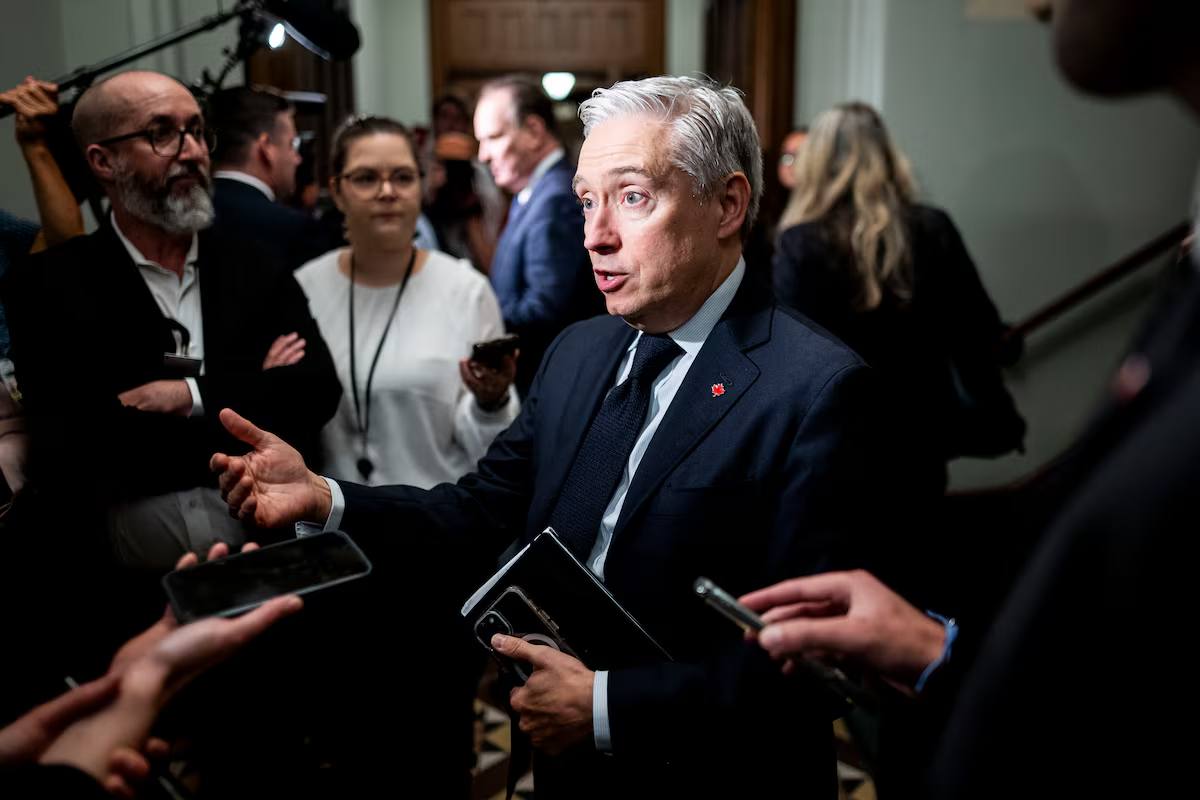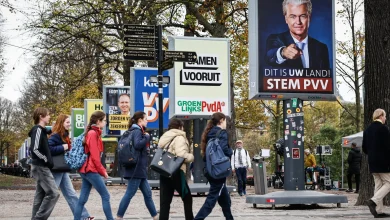Finance Minister hints job cuts to come in federal budget, alarming union leaders

Open this photo in gallery:
Finance Minister François-Philippe Champagne says the government intends to bring the federal civil service ranks back to a sustainable level in the coming budget.Adrian Wyld/The Canadian Press
Union leaders are warning of job cuts in the tens of thousands after Finance Minister François-Philippe Champagne said Wednesday that the Liberal government’s budget will bring down the size of the public service to a “sustainable level.”
Mr. Champagne made the comments just days before he will table the 2025 federal budget next Tuesday.
“We need to bring back the civil service to a sustainable level. And I think people have seen, and they will see in the budget, if you look at how many people we have today and what we had before COVID-19, we need to get back to something more sustainable,” he said.
The Liberal Party’s April election platform said a Liberal government “is committed to capping, not cutting, public service employment.”
Mr. Champagne’s comments Wednesday suggest Ottawa will be going further than a cap at current levels.
The size of the federal public service has grown sharply since the Liberals formed government in 2015, when there were 342,129 full-time equivalent positions. That figure stood at 440,984 in 2023-24, which is more than 70,000 positions above prepandemic levels in 2018-19, according to figures compiled by the Parliamentary Budget Officer.
“We’ll be very transparent with people, but we’re going to be very compassionate in how we do it as well,” Mr. Champagne said.
The government has said the budget will outline a plan to both spend less and invest more, meaning savings will be found in day-to-day operational spending to help fund large new capital projects aimed at boosting economic growth at a time of trade tensions with the United States.
Sharon DeSousa, president of the Public Service Alliance of Canada, the largest union of federal employees, said in a statement that Mr. Champagne’s comments suggest substantial job cuts.
“Minister Champagne wants us to go back to the ways things were before COVID-19. But the reality is, our world has changed since then,” she said.
“People in Canada are going to be shocked when they realize the extent of these cuts. Champagne’s comments on returning to pre-COVID staff numbers mean that 70,000 public service workers could lose their jobs, leaving a hollowed-out public service to run vital services that keep our country safe.”
(The size of the public service can be measured in different ways. PSAC’s figure is based on the Treasury Board’s head count data, comparing 2024 with 2020 levels.)
Growing number of economists predict Liberal budget won’t shrink debt-to-GDP ratio
The minister made the comments during the latest of a series of announcements that disclose funding ahead of the budget.
The government announced on Wednesday that the budget will propose $382.5-million over five years, with $76.5-million a year after that, to renew funding for the Women’s Program, which supports projects related to women’s equality.
The budget will also propose $54.6-million over five years and $10.9-million a year after that to renew funding for 2SLGBTQI+ programming.
At one point during his remarks, Mr. Champagne used the term “work force adjustment” to describe the budget’s impact on the public service. The term refers to a specific process in the government’s collective agreements with employees that take effect when a department decides that the services of specific employees are no longer needed.
The process can involve layoffs or alternatives, such as swapping a job with a non-affected employee who is willing to leave government.
“Would there be work force adjustments? The answer is yes. But you do that in a compassionate way. You do that in a fair way. You do that in a smart way,” he said.
John Fragos, the minister’s press secretary, later clarified that Mr. Champagne was using the term “work force adjustment” generally and was not referencing the formal process in the collective agreements.
Mr. Fragos declined to say whether the government will rely entirely on attrition to adjust public service levels. He said that information will be made clear in Tuesday’s budget.
Mr. Champagne listed examples of potential changes, including merging programs within a department or making better use of technology.
Ottawa’s budget to include more for retraining, tax credit for personal support workers
Union leader Sean O’Reilly, president of the Professional Institute of the Public Service of Canada, said invoking work force adjustment would mean going beyond attrition.
He pointed out that some departments and agencies have recently gone through work force adjustments, including the Canada Revenue Agency. He said the recent Auditor-General’s report that found major service shortfalls at the CRA shows that job cuts affect services to Canadians.
Mr. O’Reilly said he has “serious concerns” with Mr. Champagne’s comments about the public service. He also said unions have not been consulted on any changes.
“Attrition is not a solution. Cuts aren’t a solution,” he said in an interview. “I feel like all the decisions have already been made, and I can’t even have a meaningful conversation with them.”
Mr. O’Reilly said part of the growth in the public service under then-prime-minister Justin Trudeau involved restoring reductions that took place under then-prime-minister Stephen Harper. He also said the public service should grow as the population of Canada grows.
Exactly how much spending will be cut in Tuesday’s budget is unclear. The Liberal platform laid out a relatively modest plan to save $6-billion in the fiscal year that begins on April 1, 2026, followed by cuts of $10.2-billion and $13-billion the following years.
The Finance Minister then asked ministers in the summer to find “ambitious” spending cuts ahead of the budget. He said ministers should reduce program spending by 7.5 per cent in the first year, followed by 10 per cent in savings the next year and 15 per cent in the 2028-29 fiscal year.
This works out to $15-billion in the first year, $20-billion in the second year and $30-billion by year three, according to a recent analysis by Desjardins.
With a report from Mahima Singh in Toronto





